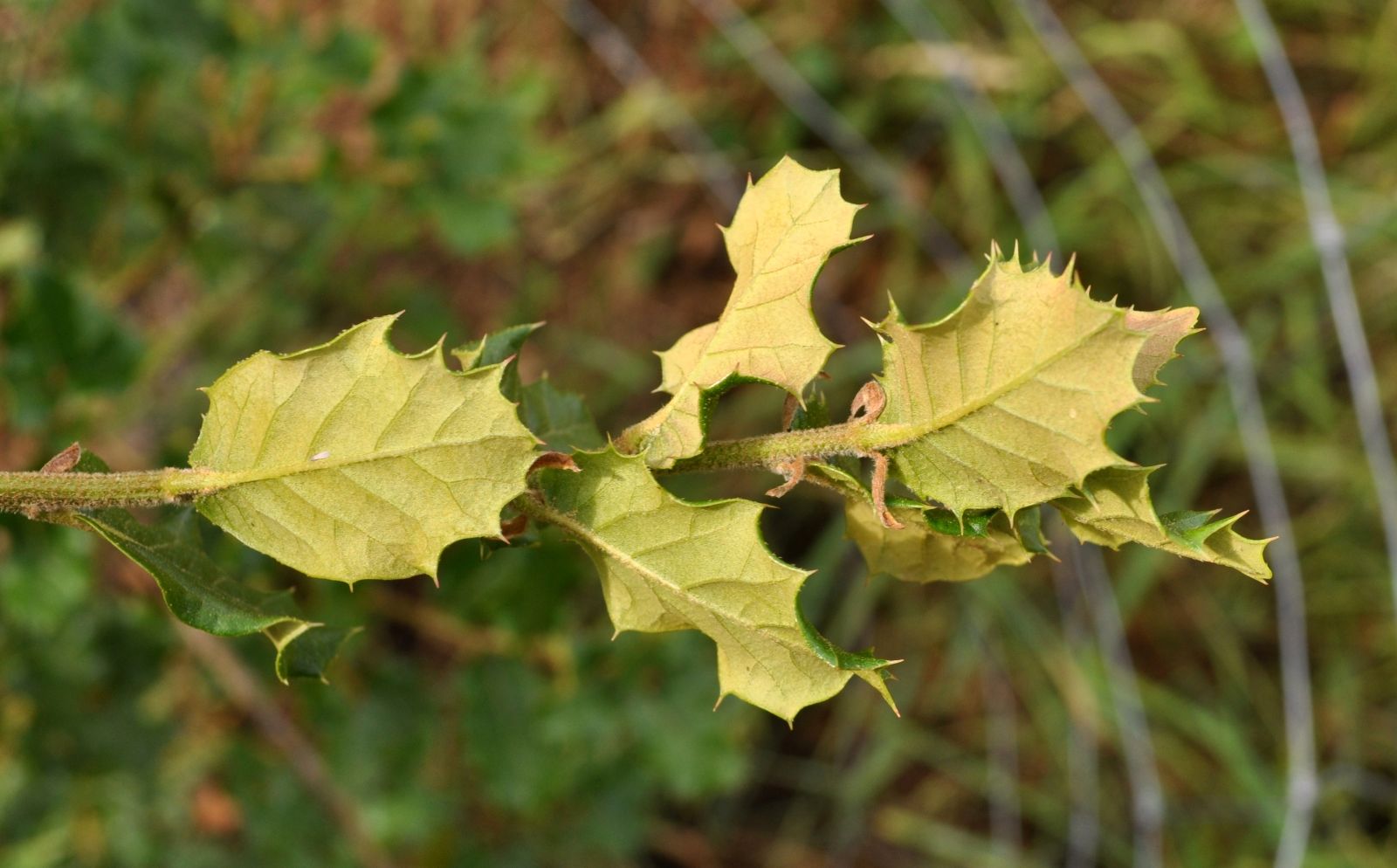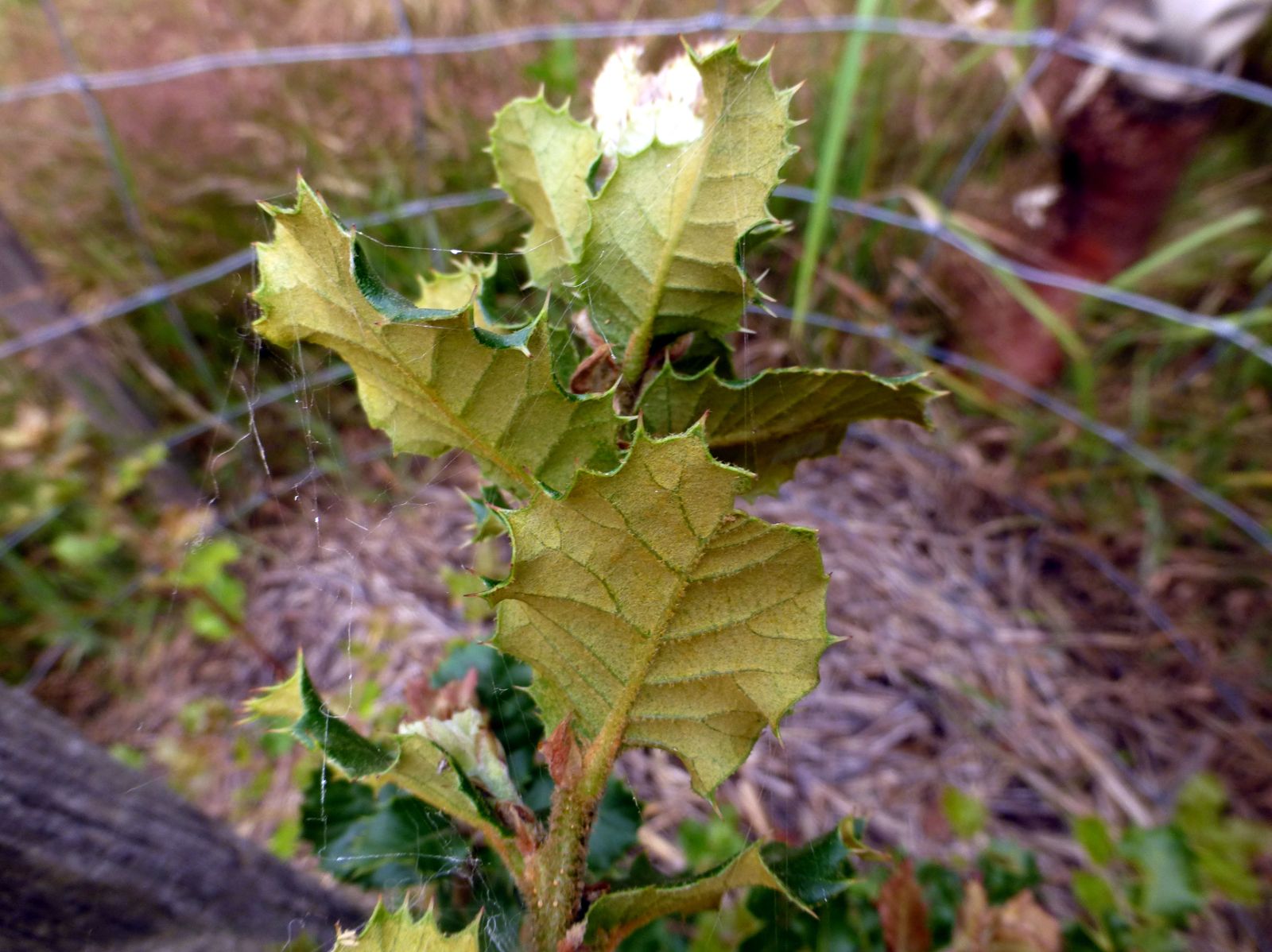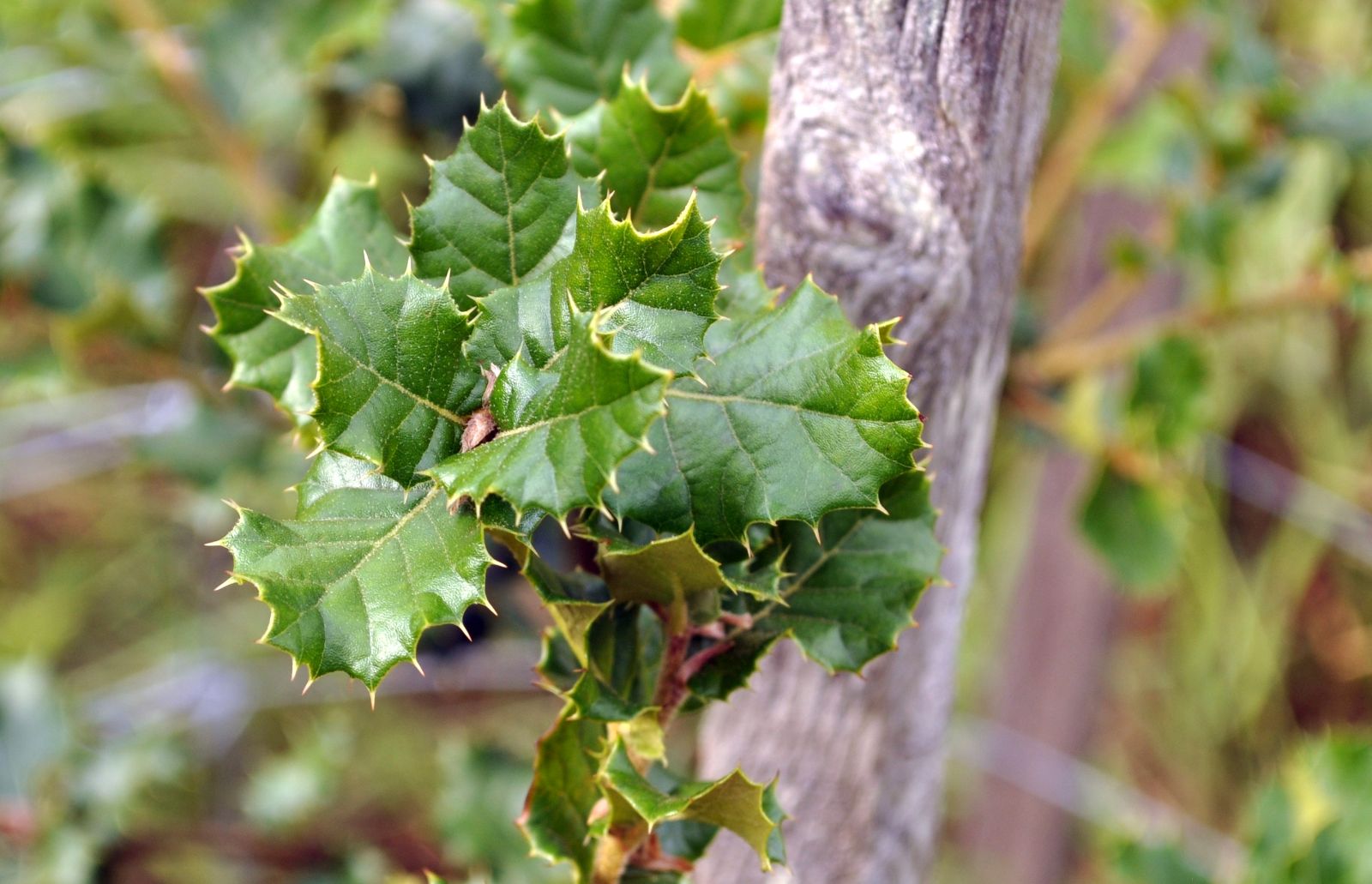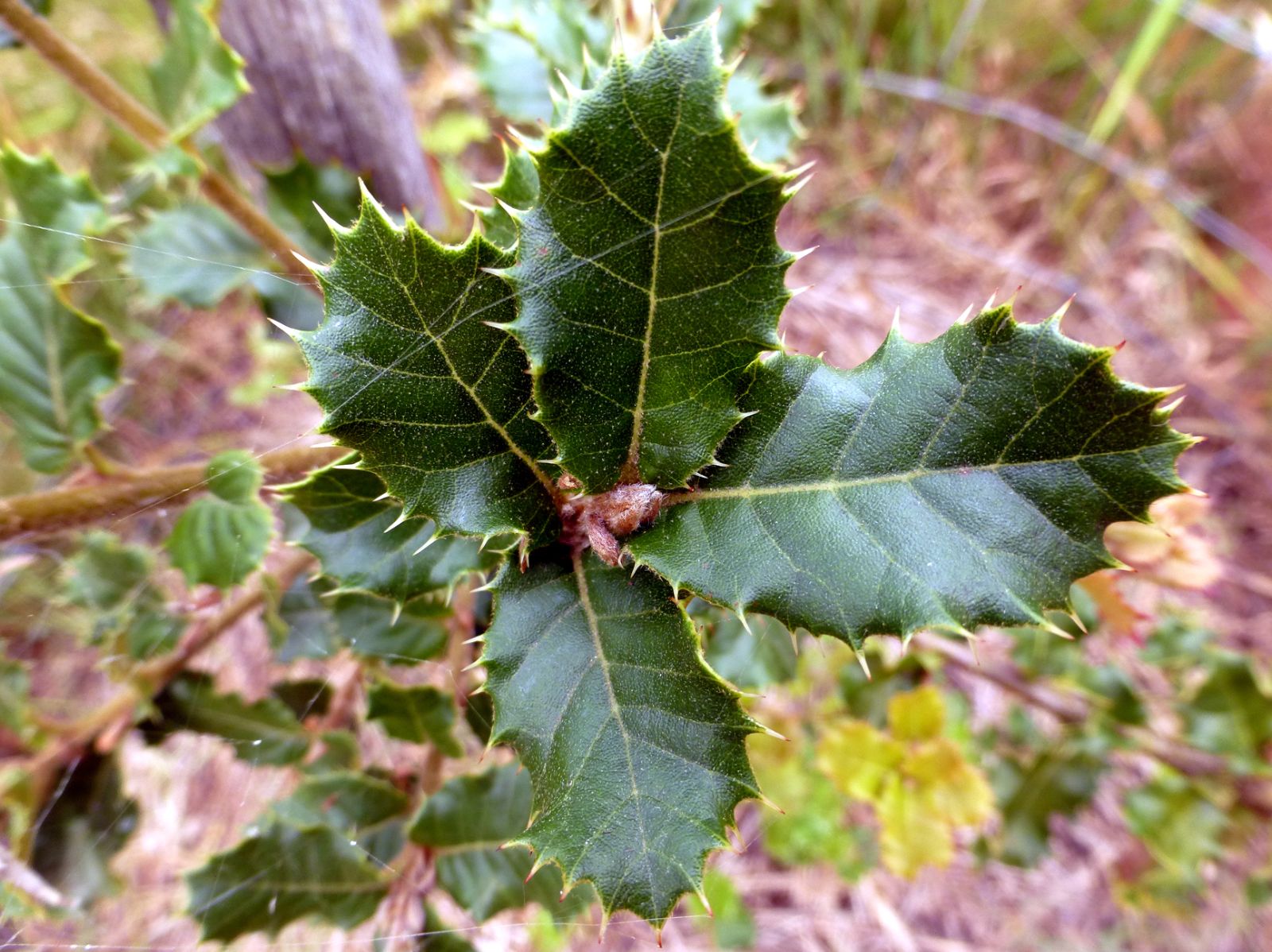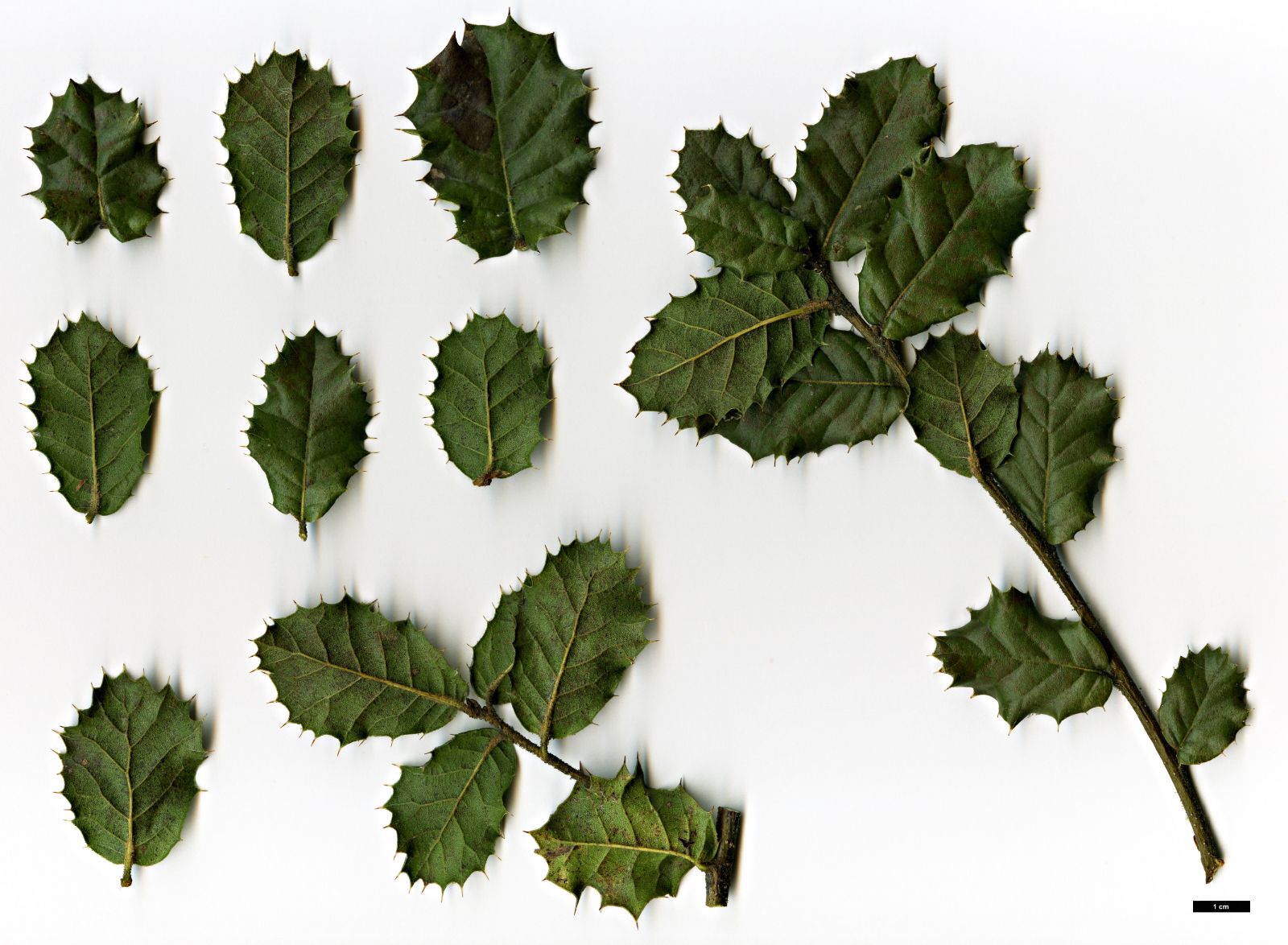Quercus spinosa
Sponsor
Kindly sponsored by
The Trees and Shrubs Online Oak Consortium
Credits
Allen Coombes & Roderick Cameron (2021)
Recommended citation
Coombes, A. & Cameron, R. (2021), 'Quercus spinosa' from the website Trees and Shrubs Online (treesandshrubsonline.
Genus
- Quercus
- Subgen. Cerris, Sect. Ilex
Synonyms
- Quercus spinosa subsp. miyabei (Hayata) A. Camus
Other taxa in genus
- Quercus acerifolia
- Quercus acherdophylla
- Quercus acrodonta
- Quercus acuta
- Quercus acutifolia
- Quercus acutissima
- Quercus afares
- Quercus affinis
- Quercus agrifolia
- Quercus alba
- Quercus aliena
- Quercus alnifolia
- Quercus aquifolioides
- Quercus arizonica
- Quercus arkansana
- Quercus aucheri
- Quercus augustini
- Quercus austrina
- Quercus × auzendei
- Quercus baloot
- Quercus bambusifolia
- Quercus baronii
- Quercus bicolor
- Quercus brantii
- Quercus buckleyi
- Quercus canariensis
- Quercus canbyi
- Quercus candicans
- Quercus castanea
- Quercus castaneifolia
- Quercus cerris
- Quercus chenii
- Quercus chrysolepis
- Quercus coccifera
- Quercus cocciferoides
- Quercus coccinea
- Quercus conspersa
- Quercus crassifolia
- Quercus crassipes
- Quercus delavayi
- Quercus dentata
- Quercus deserticola
- Quercus dolicholepis
- Quercus douglasii
- Quercus dumosa
- Quercus durifolia
- Quercus eduardii
- Quercus ellipsoidalis
- Quercus emoryi
- Quercus engelmannii
- Quercus engleriana
- Quercus euboica
- Quercus eugeniifolia
- Quercus fabri
- Quercus faginea
- Quercus falcata
- Quercus floribunda
- Quercus frainetto
- Quercus franchetii
- Quercus fruticosa
- Quercus fusiformis
- Quercus gambelii
- Quercus garryana
- Quercus geminata
- Quercus georgiana
- Quercus germana
- Quercus gilliana
- Quercus gilva
- Quercus glabrescens
- Quercus glauca
- Quercus graciliformis
- Quercus gravesii
- Quercus griffithii
- Quercus grisea
- Quercus guyavifolia
- Quercus hartwissiana
- Quercus hemisphaerica
- Quercus × hispanica
- Quercus hondae
- Quercus hypargyrea
- Quercus hypoleucoides
- Quercus ilex
- Quercus ilicifolia
- Quercus imbricaria
- Quercus incana
- Quercus infectoria
- Quercus insignis
- Quercus ithaburensis
- Quercus kelloggii
- Quercus × kewensis
- Quercus kiukiangensis
- Quercus laceyi
- Quercus laevis
- Quercus lamellosa
- Quercus lanata
- Quercus lancifolia
- Quercus laurifolia
- Quercus laurina
- Quercus × leana
- Quercus leucotrichophora
- Quercus × libanerris
- Quercus libani
- Quercus lobata
- Quercus lobbii
- Quercus lodicosa
- Quercus longinux
- Quercus longispica
- Quercus look
- Quercus × ludoviciana
- Quercus macranthera
- Quercus macrocalyx
- Quercus macrocarpa
- Quercus macrolepis
- Quercus marilandica
- Quercus mexicana
- Quercus michauxii
- Quercus mongolica
- Quercus monimotricha
- Quercus montana
- Quercus morii
- Quercus muehlenbergii
- Quercus myrsinifolia
- Quercus myrtifolia
- Quercus nigra
- Quercus × numidica
- Quercus oblongifolia
- Quercus obtusata
- Quercus oglethorpensis
- Quercus oxyodon
- Quercus pagoda
- Quercus palmeri
- Quercus palustris
- Quercus pannosa
- Quercus parvula
- Quercus petraea
- Quercus phellos
- Quercus phillyreoides
- Quercus planipocula
- Quercus poilanei
- Quercus polymorpha
- Quercus pontica
- Quercus prinoides
- Quercus pubescens
- Quercus pyrenaica
- Quercus rehderiana
- Quercus reticulata
- Quercus robur
- Quercus rotundifolia
- Quercus rubra
- Quercus rugosa
- Quercus rysophylla
- Quercus sadleriana
- Quercus salicina
- Quercus sartorii
- Quercus × schneideri
- Quercus schottkyana
- Quercus semecarpifolia
- Quercus senescens
- Quercus serrata
- Quercus sessilifolia
- Quercus setulosa
- Quercus shumardii
- Quercus sinuata
- Quercus stellata
- Quercus stenophylloides
- Quercus suber
- Quercus subspathulata
- Quercus tarokoensis
- Quercus tatakaensis
- Quercus texana
- Quercus tomentella
- Quercus trojana
- Quercus tungmaiensis
- Quercus turbinella
- Quercus × turneri
- Quercus undulata
- Quercus utahensis
- Quercus utilis
- Quercus uxoris
- Quercus variabilis
- Quercus velutina
- Quercus virginiana
- Quercus vulcanica
- Quercus warburgii
- Quercus wislizenii
- Quercus xalapensis
Tree to 20 m or more, usually less, and often shrubby, particularly in dry places or at high altitudes. Trunk to 65 cm dbh. Bark dark reddish brown, fissured. Young shoots with yellow-brown hairs, becoming glabrous. Leaves evergreen, leathery, with up to 7 pairs of sometimes impressed lateral veins, flat or somewhat convex, to 6 × 3 cm, nearly rounded to elliptic or slightly obovate, rounded at the apex and the base, margin with spiny teeth, particularly on young plants, to entire. Pubescent on both sides when young, particularly beneath, quickly becoming glossy dark green and glabrous above, paler beneath but persistently brown-hairy at the base of the midrib. Petiole with persistent hairs, 5 mm long or less. Infructescence to 3 cm long with up to 4 cupules. Cups hemispherical, to 0.8 × 1.2 cm, with appressed pubescent scales. Acorns ellipsoid to ovoid, to 2 × 1.2 cm, about a third enclosed in the cup and ripening the second year. (Menitsky 2005; Huang et al. 1999; le Hardÿ de Beaulieu & Lamant 2010).
Distribution Myanmar China Fujian, Gansu, Guizhou, Hubei, Hunan, Jiangxi, Shaanxi, Sichuan, Xizang, Yunnan Taiwan
Habitat Rocky places on mountain slopes in oak and pine-oak forests, often on limestone at about 1000–3000 m asl.
USDA Hardiness Zone 7
Conservation status Least concern (LC)
Taxonomic note For some authors Q. tatakaensis is a synonym of Q. spinosa, but we maintain it as distinct here. A subspecies, Q. spinosa subsp. miyabei, is now treated as a synonym of Q. spinosa. See Chassé 2017.
Cultivated in several English collections, including Maurice Foster’s garden at White House Farm in Kent. This derives from a collection by Keith Rushforth in SE Tibet (KR 6025). This is also represented at Chevithorne Barton (c. 2 m tall, J. MacEwen pers. comm. 2020). Plants from Taiwan populations are less common, but young ones are at Arboretum des Pouyouleix in France. A plant at Meise Botanic Garden, Belgium, received from Taiwan as Q. spinosa var. miyabei f. rugosa, is Q. tatakaensis q.v..
Seedlings raised at the Sir Harold Hillier Gardens, England, from Cao Ming 316 (gathered in Yunnan as Q. spinosa) are in fact Q. dolicholepis (A. Coombes pers. comm. 2007).
Described in 1884. The epithet means ‘spiny’ in Latin and refers to the toothed leaf margin.

